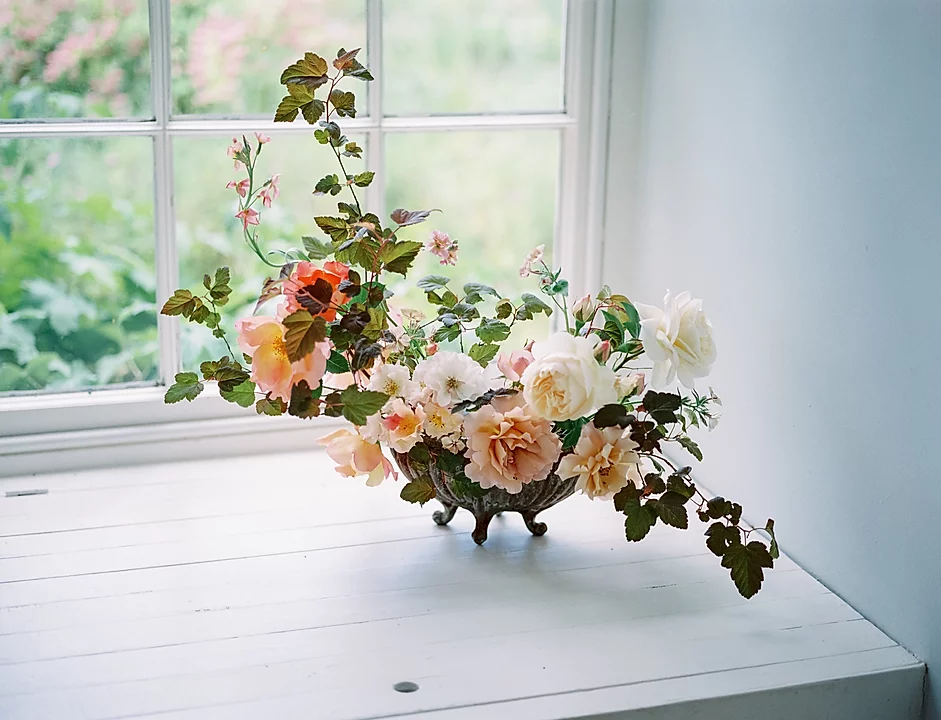Choosing your wedding photographer is one of the most exciting and impactful decisions you’ll find yourself making while wedding planning – because every location, stylistic detail, outfit, and emotion will be captured through their eyes. Apart from the marriage itself, the photos will be one of the most enduring mementoes from this wonderful day – one you and your loved ones will treasure for many years to come, and that will put an uncontrollable grin on your face no matter what is going on around you.
When supporting couples as their wedding planner, I suggest photographers based on style alignment, personality affinity, and of course budget – I match couples to artists whose work I believe they will love, trust, and respect, while totally “getting” one another. It’s truly a joy to see these relationships blossom, and it’s always an honour to be a part of that story ❤️
One of the questions I ask myself when searching for a perfect photographer for a couple is whether film photography might be a medium that aligns with their style and their ethos. The truth is, although film photographs can look and “feel” different, it’s not just about what’s on the surface – the experience of having your wedding or elopement captured on film can itself be different, and this needs to align with your own ethos in order for it to be worth the additional investment for you.
I’ve had the pleasure of getting to know some fantastic film photographers in the wedding industry this year, and they’ve inspired me to shed some light on what goes on behind the scenes, why their approach is different, what the practical things to know are, and how to make the most of having booked a film photographer for your wedding or elopement. I also touch on the practical advantages and disadvantages, as well as some points about the investment needed, because I truly believe education and transparency on these issues will help photographers, couples, and even venues and suppliers, respect and understand one another.
In order to provide as comprehensive, honest, and useful a guide here as possible, I interviewed four brilliant film photographers about their work within the wedding industry – I’m so grateful to Gina Dover-Jaques, Terry Li, Flora Westbrook, and Dani Cowan for their time and patience talking me through everything! It’s thanks to their answers that this article has come together, and we really hope you enjoy the read. I highly recommend browsing through their dreamy websites and portfolios as well, so do scroll down to the bottom of this post to learn more about each of them.
Before we get started, I do want to say: a good photographer can take captivating, emotive, artful photographs regardless of their kit. This isn’t an article about one particular method being better than another, but rather an exploration of a photography technique that I feel isn’t currently very well known by couples, nor is widely represented in the UK wedding industry. Film photography is experiencing a fascinating revival, and I hope this guide helps to understand why.
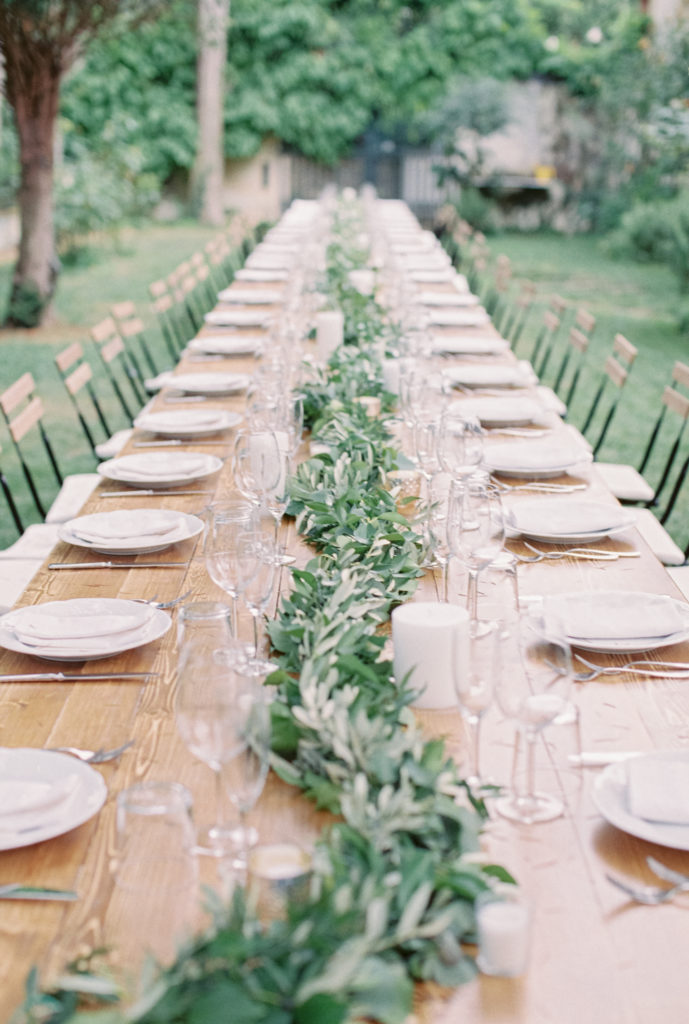
WHAT IS FILM PHOTOGRAPHY?
Let’s start at the beginning. Unless you or your partner are photography enthusiasts, it’s very possible (and entirely normal) for you not to have considered that having your wedding photographed in film would even be possible these days. Isn’t that what we used to use BEFORE digital? Well, yes – but it’s an art form still being very much enjoyed, refined, and developed by photographers and labs who choose to. The makers of film and film cameras have come a long way in the last few decades, and film is shot with more modern methods and a more contemporary approach now, all of which contribute to setting these photographs apart from what you might remember from your parents’ albums. So let’s take a step back and go over the basics of what film photography is today.
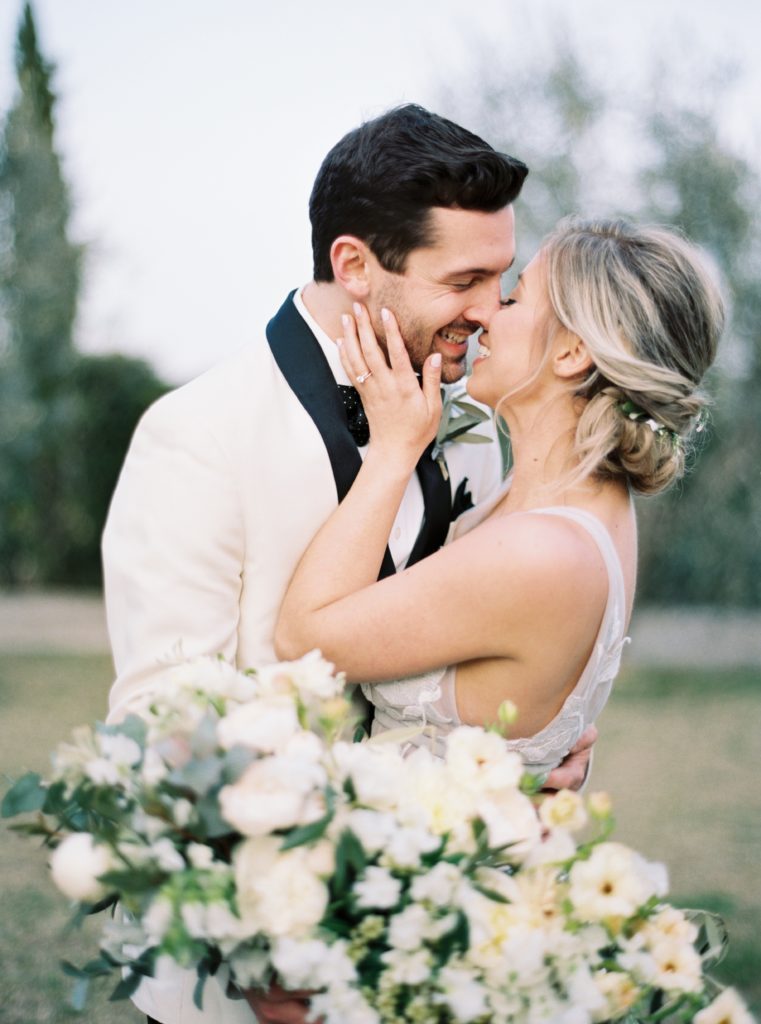
In essence, a photographer shooting your wedding in this medium will show up with a carefully chosen toolkit of analog cameras and physical rolls of film. Every camera has a plethora of manual and mechanical settings to know inside out, and every type of film has a different scope and potential – which means your photographer will have made some very important decisions before any light has hit the lens. They will then proceed to shoot your wedding from beginning to end as you would expect, though they may do so in a more “intentional” way than a digital shooter might need to – but we’ll touch more on this later. Once the wedding is over, the film rolls are posted to a lab who then develops and processes them, and then scans the negatives into the computer. These images are then uploaded online and sent to the photographer, who can then further edit the images if he/she wishes to. They will then be delivered to the couple as high-resolution, downloadable JPEG files; that is, the way they are delivered is the same whether they were taken on a film camera or a digital one. Many photographers may offer additional options such as fine art prints and albums, which is a wonderful way to enjoy these heirloom photographs you’ve invested in.
Dani says: “Most film wedding photographers these days shoot medium format film because the photos are larger, can handle more, and they give that full-frame camera effect with a shallow depth of field and creamy background. A lot of wedding pros also use 35mm film cameras to supplement during the day as medium format film is extremely expensive (about $2 every photo) and 35mm film allows more photos to be taken per roll. File sizes are typically smaller and there is usually quite a bit more grain, so it really just depends on the photographer’s style. When it comes to labs, wedding photographers will generally be very particular about where they send their film – primarily because working with the same lab over and over again gives our work a consistent style and color profile, which is necessary for our clients. Different labs will process film differently, which is why some of us ship our film quite far overseas to get just the right look!”
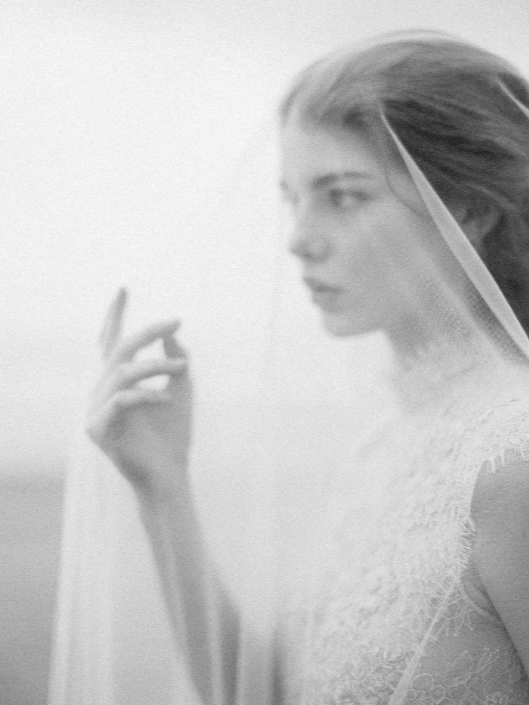
WHY CHOOSE FILM OVER DIGITAL?
The main reasons one might choose film over digital are twofold: one has to do with the feel of the photographs, and the other has to do with the approach to photography.
Film photographs are generally more forgiving on highlight detail, while also offering a creamy image compression for backgrounds, smooth blending of light and tone, a flattering colour palette, and very aesthetically pleasing grain texture and vibrancy. You’ll notice the examples of film photography in this article – they feel deeply romantic, timeless, painterly, natural, nostalgic, and with a captivating amount of depth to them. This is partly thanks to the chemical structure in the film material, as compared to the effect of a digital sensor. A skilled digital photographer can of course create a similar style by using the right in-camera settings and carefully considered post-processing through programs like Photoshop and Lightroom.
Gina says: “The reason I choose to shoot in film is that it is a joy to work with – it’s a living breathing thing! It’s radiant and rich, with a soft aesthetic that is so dreamy and makes skin looks incredible. The reason my couples choose film for their wedding is because they want to invest in heirloom photography. Rolls of film cost money, but my couples are investing in my talent to create a luxurious suite of authentic, timeless storytelling images that are captured with care and attention. Also, film is forgiving in unforgiving light. Film’s impressive dynamic range means that darks and lights, such as the groom’s suit and the bride’s dress, all retain their gorgeous detail.”
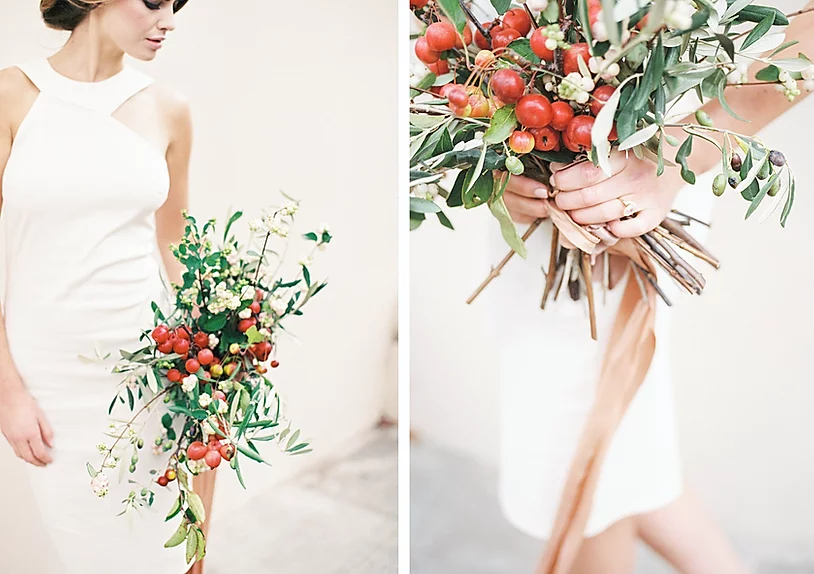
There is definitely a difference in approach, which I find to be a really fascinating feature of film photography. Photographers working with the medium of film tend to be extra patient, vigilant, and skilled at being at the right place at the right time. Film does not allow for the rapid, successive shooting that digital does, which means a film photographer will often be aiming to shoot for quality and not quantity, and in a very intentional way. In practice, this means less shots are fired, but a good film photographer will still generally deliver around the same number of images to a wedding client as a digital shooter would (they just delete fewer!). This more methodical approach encourages moments for slowing down and soaking in the day. Of course that’s not to say that there aren’t digital photographers out there that embrace this ethos and approach – but it definitely is true that film’s “limitations” impose an altogether slower and more considered shooting style on the artist, which in turn becomes a part of the art form.
Speaking to film photographers, I hear so many of them express that they actually love not being able to see the photo when they take it, as it makes them more aware. Waiting for the images to be developed means having some separation between taking the photo and viewing it, which can help them appreciate and reflect on their work. They embrace even the costs, because it makes them strive to make every shot count, and every frame better than the one before. Most film shooters also say that they adore the colours that they can produce with film and that, with the right lab, there is hardly any editing or post-processing to do – they essentially arrive ready to be saved into a gallery and sent to their client. The grain of film, which could be regarded as a mark of inferior quality in a digital sensor, can actually be a truly beautiful celebration of life’s perfect little imperfections, of being in the moment, and of creating something unique.
As a couple, understanding if this perspective aligns with your own is as important as assessing whether the look of film is right for you. In addition to that, you may find it exciting, indulgent, and almost whimsical to know that an old-fashioned method has been used in creating your wedding photographs – like a relic of bygone times, revived by a skilled artisan who is passionate about it. Or, you may not feel that way – and that’s absolutely valid too. This is a very personal and instinctive choice, and entirely down to you.
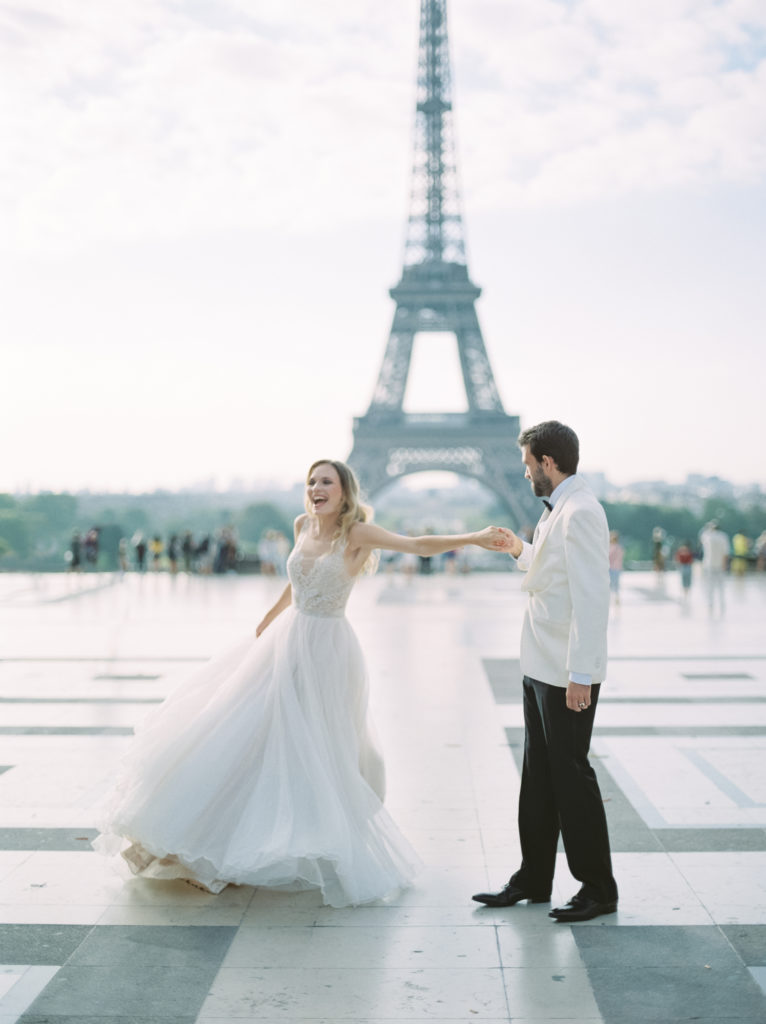
WHAT TO EXPECT FROM WORKING WITH A FILM PHOTOGRAPHER
From a practical perspective, not much will change for you, apart from what I’ve mentioned above about the change in pace. A film photographer will consider the light and composition of each frame very carefully before committing to exposing the shot, which may be different to the experience you’ve had with digital photographers in the past. A film photographer also needs to reload the camera every so often, though some will bring a dedicated film loading assistant with them. For example, there are 16 frames on every roll of medium format film – which means that, every 16 images, a film shooter would need to open their camera and add a new roll. This contributes to needing to take the day a bit more slowly, both for the photographer and the couple.
Gina says: “Whether I am creating photos on film or digital format, the only difference that my couples will see on the day, is that I will read the natural light with a ‘handheld’ light meter. Other than that, I work with purpose and consideration, in a chilled and guiding way that ensures my couples feel safe and at ease.”
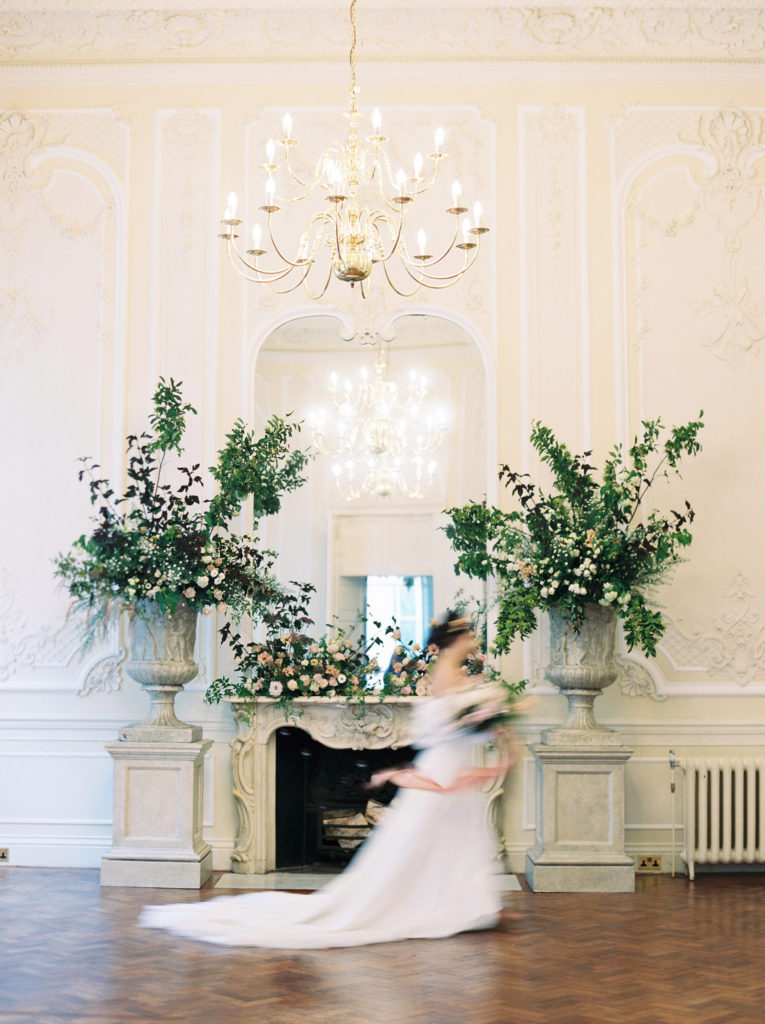
Once the light fades and the party starts, film shooters may switch to black and white film or to digital cameras, though some will stick to film all day regardless of lighting changes. Photographers that work with both will often use the word “hybrid” when describing their work or wedding packages. Regardless of how your film shooter chooses to approach these after-dark hours, do make sure it’s something you’ve discussed and that you’re comfortable with. Do ask to see a few full client galleries ahead of time so you know what to expect and so you can get a sense of how their style evolves throughout the day.
Gina says: “I love to capture the drinks reception and the fast pace of the dancing in the evening with digital format as it works well for these aspects of the day. It’s important to me that I create stunning images for my couples whatever the conditions, and so I work with both film and digital formats to give my couples the best of both worlds. I always suggest locations and poses that enhance who my couples are, regardless of which camera I’m holding. One of my favourite moments is capturing a few quiet moments with my couples just prior to sunset, when the light is utterly dreamy!”
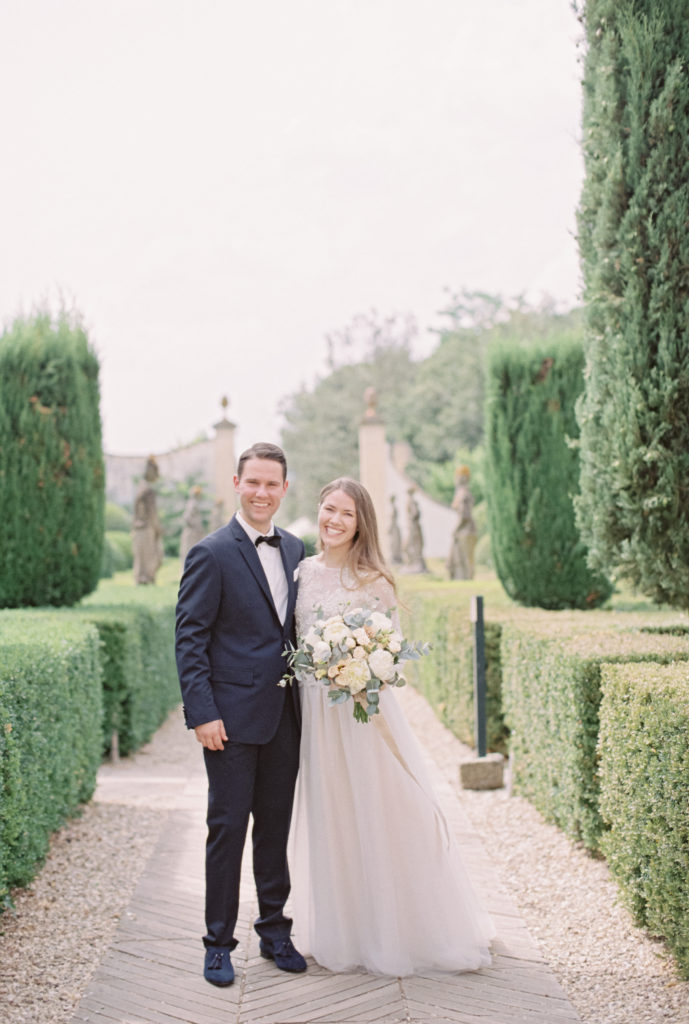
You will still receive the images digitally, as mentioned earlier, though the time it takes the photographer to get the galleries ready for you may be a bit longer. Film labs typically take anywhere from 2-3 weeks to deliver images to the photographer once processed, plus there is some editing and culling time needed after that. This will depend a lot on the photographer’s systems and processes, as well as which lab they ship their rolls to, and how busy they are at a particular time of year.
Flo says: “I always ask couples to budget a bit of extra time for their couple’s session if they want film photography. The film shots will be more intentional, but not in a posed or cheesy way! The waiting process is real though – it can take 6 to 8 weeks for couples to have the photographs back.”
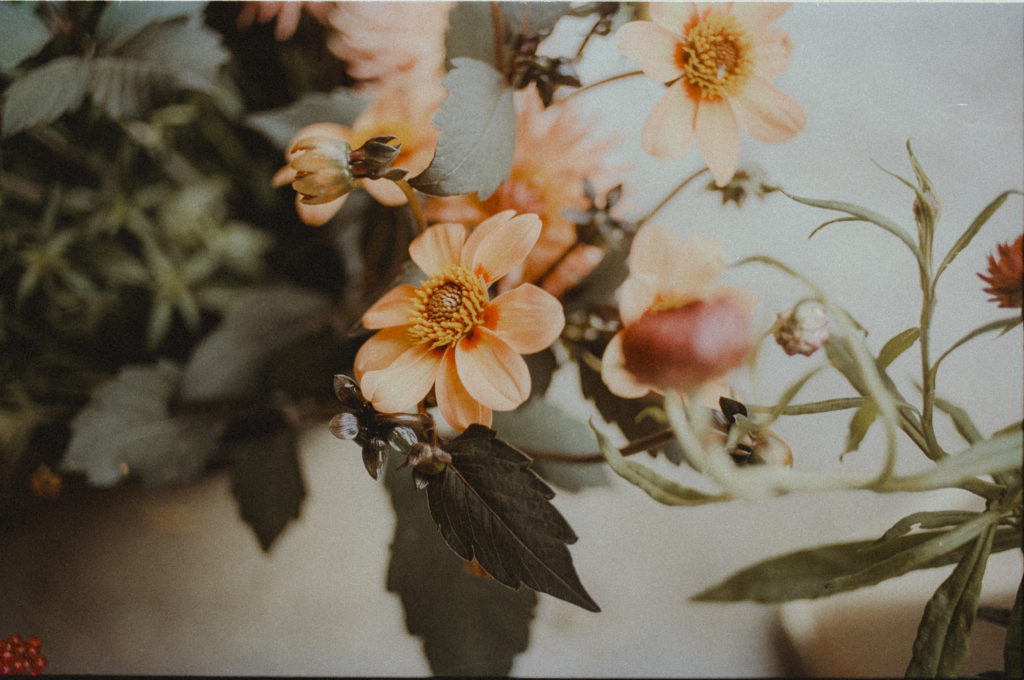
As for the images themselves, it’s definitely worth investing time in getting to know a photographer’s portfolio well before moving forward with the booking. While the look of film can be quite distinctive, keep in mind that, just like with digital shooters, there is also a wide variation in the style of photographs between film shooters. You may see some portfolios rich in colour and contrast, while others favour a less saturated, more neutral palette. There will also be differences in how the photographers pose, direct, and compose images, so be sure to truly consider the work they are creating beyond their choice of format.
On the topic of style – you may have frequently seen the term “fine art photographer” used alongside “film photographer”, especially in the wedding industry. While the two concepts can be closely linked, they aren’t interchangeable. Today, the term “fine art” is a description used by photographers to qualify the way they work and the style of their images – and can mean slightly different things to different people, of course. Generally, I would say it’s about capturing moments in a slow, authentic way – it’s thinking of photography as creative expression – it’s about shooting with beauty in mind, while still making sure every image has heart, and, thus, is meaningful. A “fine art” approach will typically lead the photographer to favour soft natural light, muted palettes, and romantic aesthetics, and while often this ethos results in the photographer choosing to also (or exclusively) shoot film, it is not a guarantee. If this is something important to you, do have that conversation with them so that you can find out more about their film-to-digital ratio.
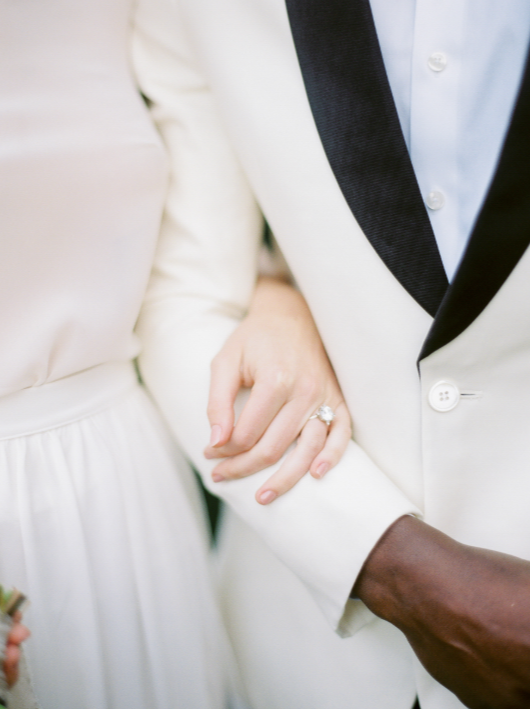
INVESTING IN FILM PHOTOGRAPHY
By and large, film photographers sit on the more expensive side of the scale. Whether it’s worth the additional investment completely depends on YOUR priorities and what is valuable to you.
One of the reasons the investment is higher is that there is a physical cost to use and develop film, which doesn’t exist for digital (the average I’ve seen is around $2.50 out of a photographer’s pocket for each image taken). My advice on this is to be aware and educated about these costs, but not be discouraged by them.
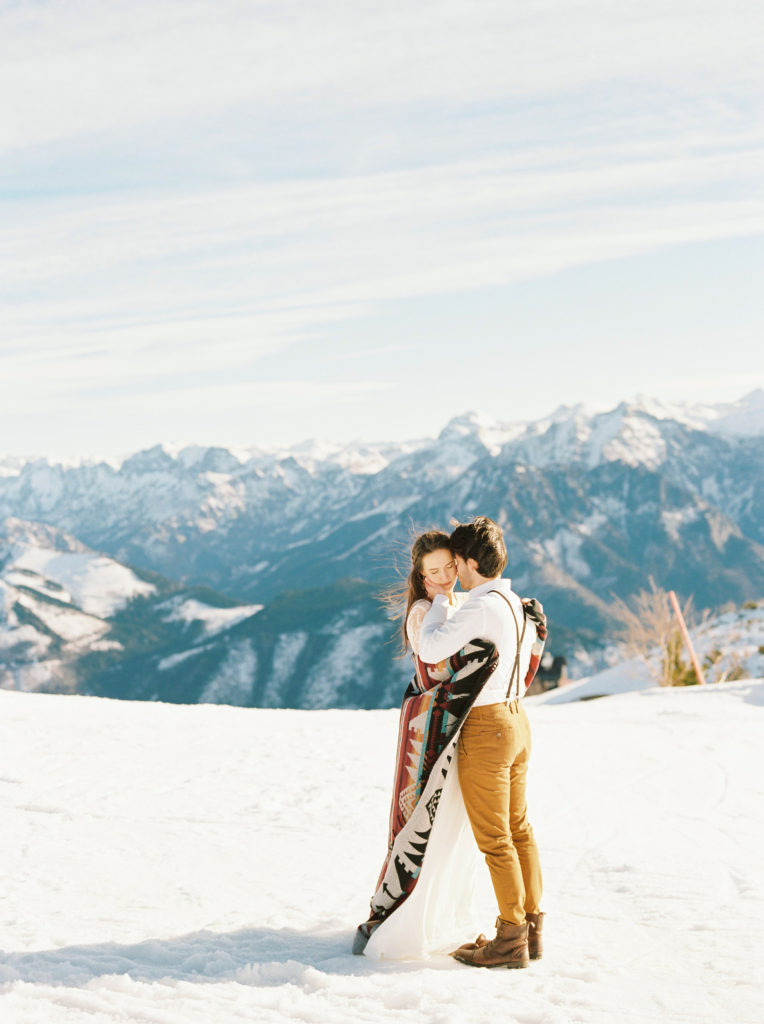
Another reason film photographers charge what they do is the commitment it takes for a film photographers to hone their skills. This is true for digital as well of course, and I am by no means claiming one is more difficult than the other! But as there is no screen that shows what photo has just been taken, film photographers in particular have to perfect their ability to see and interpret the light available to them, and be certain of how their camera, film, and lab will process it. They need to be very comfortable with the technical side, and be willing to pour over negatives if something does go awry in the processing. Mastering shooting in film is based very much on trial-and-error, and is training that fewer photographers undertake as it requires a significant investment of time and capital on the photographers’ part.
Flo says: “My expenses depend on which film I use, and can vary a lot! The one I typically use (as it has the look and grain I want) costs £60 for a pack of 5 rolls, which gives me a total of 120 colour negative frames. When shooting weddings, I usually buy 3 to 4 packs – sometimes more, depending on how long I am shooting for, and which part of the day they wish to have caught on film. I always want the flexibility to be able to shoot more rather than not enough – you can’t really take risks on a wedding day! Getting the rolls developed and scanned is another significant expense, especially if you want it at good quality. The lab I’ve chosen uses the latest state of the art film processing equipment hand-built in Germany, which gives me pin-sharp high-resolution scans that keep the full character and nuance of analogue film. I always aim to give the best quality possible to those who trust me to photograph them. The processing fees I pay are around £560+ for a typical wedding. It’s not cheap… but it’s a real investment for those who love film.”
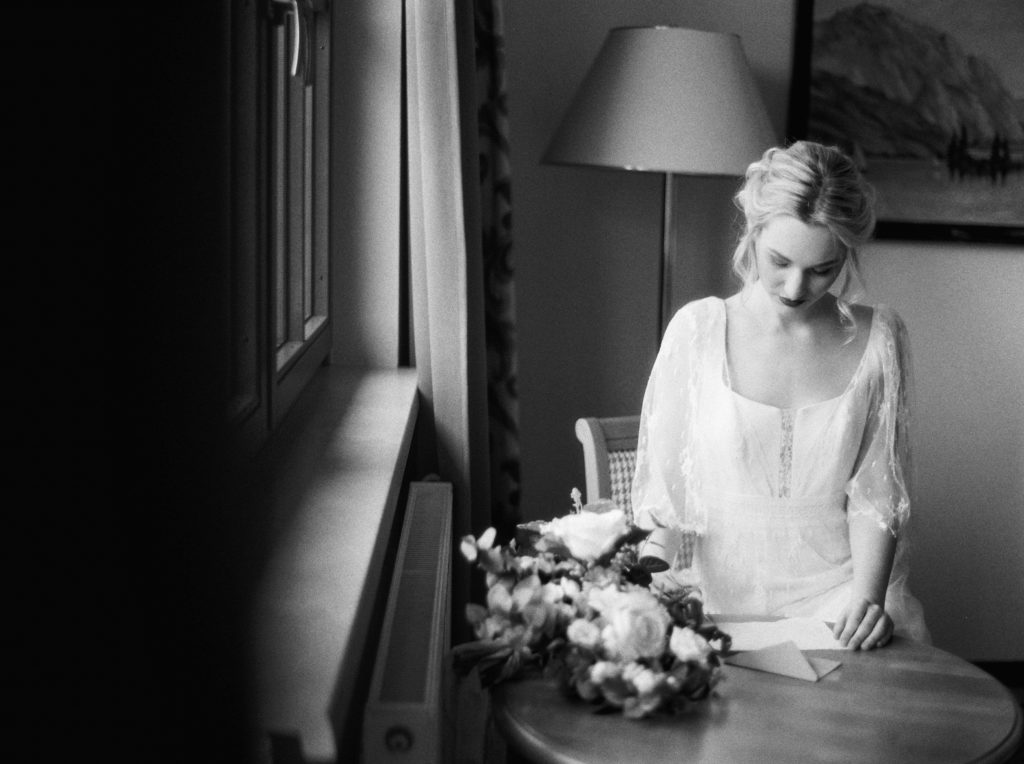
Terry says: “It takes time and lots of practice to master film photography, and to able to produce consistent results no matter what lighting situations you find yourself at. There’s the actual cost of shooting film and also of developing them as well of course – I ship my film rolls across the continent to Canada, where a professional team develop the rolls for me. Overall, it’s a more complicated process, involving more human time and also more specialist machinery. But if you love the look of film photography, it’s worth it!”
Also worth keeping in mind is the concept of supply and demand. There are few photographers around the world who specialise and excel in the art of film photography for weddings, which means that they are exceptionally desirable to their target audience, which in turn can result in full calendars and sparse availability.
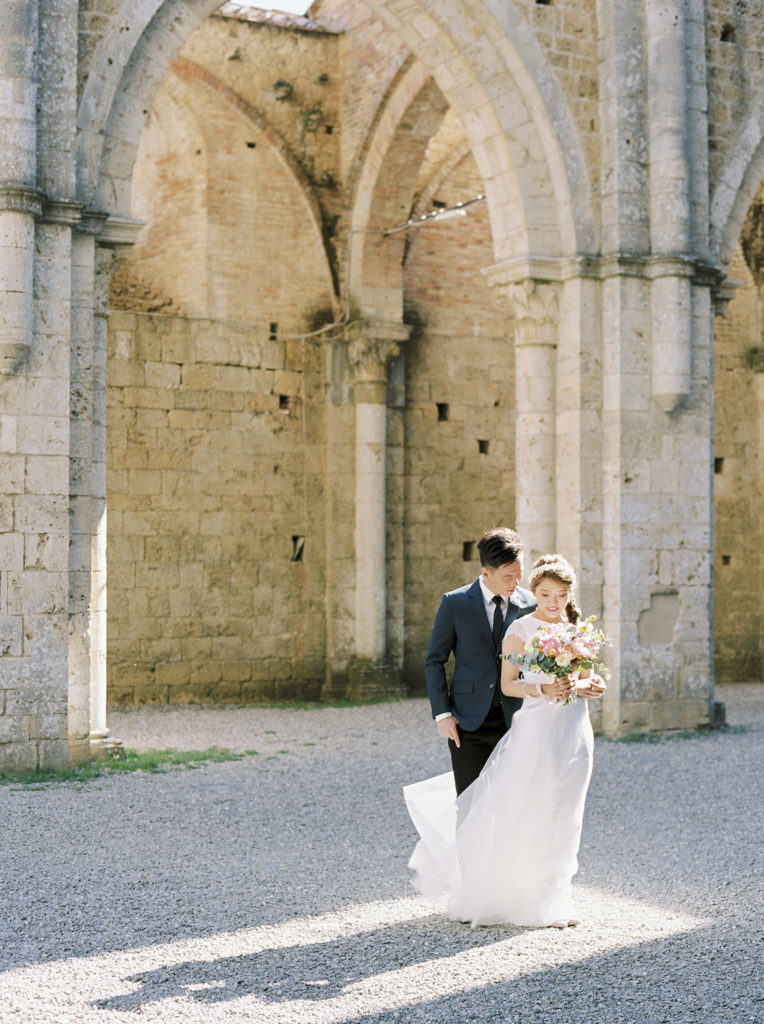
Before booking a film photographer, do take your time asking questions, and also ask to see past clients’ full wedding galleries so that you can get a real sense of what your own will look like. It’s ok to ask them about how confident they feel capturing your wedding given the venue and time of year you’ve chosen, and it’s also ok to talk about backup film equipment. While progress is being made, keep in mind that film remains an “old” technology, and film shooters might be using cameras that were released decades ago. Photographers will usually bring a back-up camera body with them, as it’s possible for film gear to have issues – though usually not as harmful as when a digital camera’s card corrupts!
This type of investment is both financial and emotional – and shouldn’t be taken lightly. This is all about making a decision that you will be proud and grateful of long after the wedding day is over.
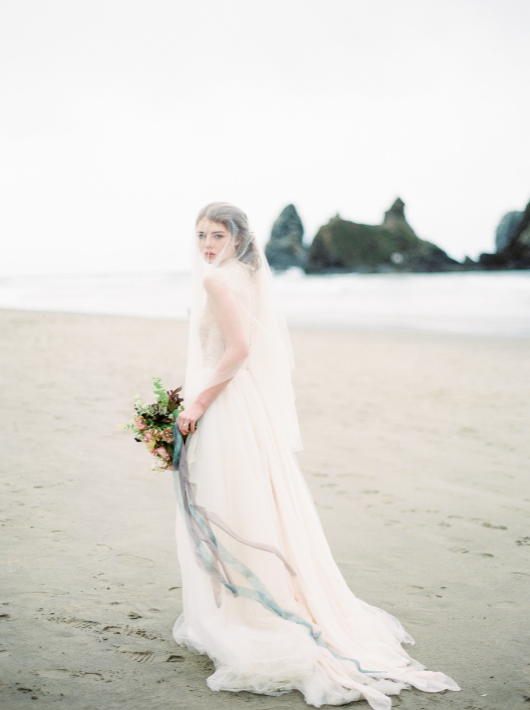
HOW TO MAKE THE MOST OF WORKING WITH A FILM PHOTOGRAPHER
If you’ve decided to invest in working with a film photographer, do remember that film truly excels in natural light. A skilled film photographer will use strategies for shooting indoors such as using window light, ambient light, a variety of film stocks, tripods and sometimes even flash. But generally – the worse the lighting conditions, the better the photographer needs to be in order to do them justice.
Elements like back-lit outdoor ceremonies, shaded mid-day spaces (ideally with trees nearby), and al fresco dinners as the light turns golden, are exactly the kind of situation that can lead to real film photography MAGIC – so keep this in mind while planning your wedding locations and timelines.
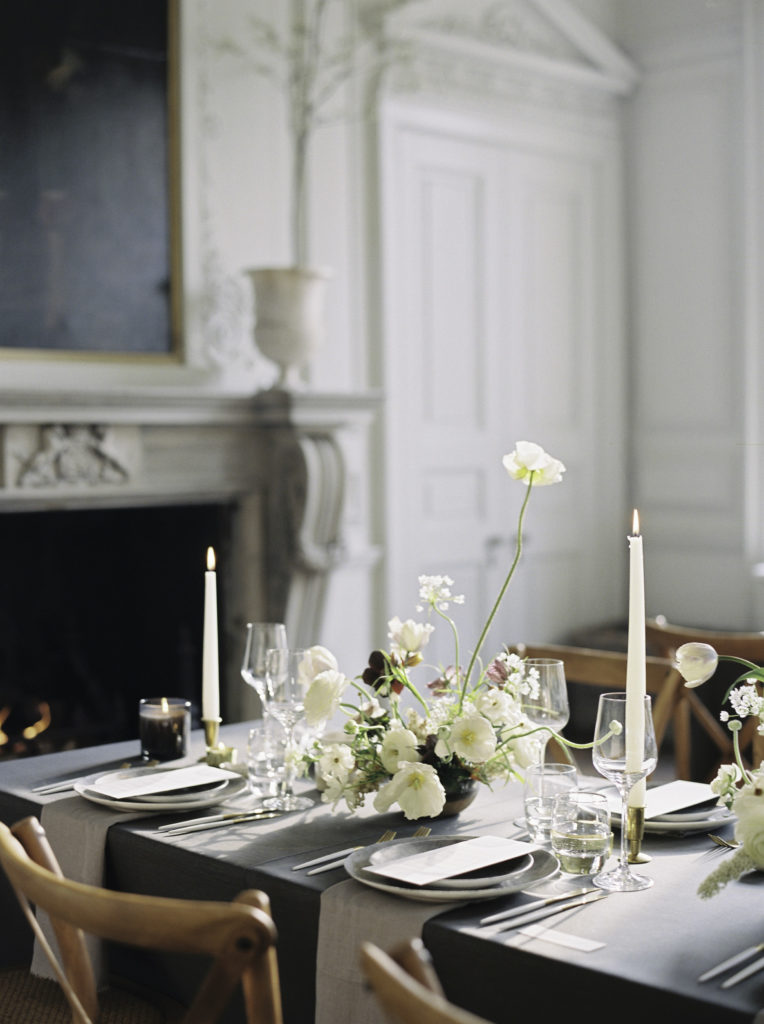
It’s also really important to choose your getting-ready location with as much thought as you do your ceremony or reception spaces. This morning prep location is where so many of the details will be shot (like shoes, dress, bouquet, stationery, and so on), it’s where the bride changes into her dress, and often it’s where bridesmaid and groomsmen portraits are taken as well. Look for spaces with ample windows and natural light (or even a covered porch), and, if possible, minimal clutter.
Flo says: “The main challenge with film photography is always to work at one and well with light. I have learned to take my time with it, and not rush. An outdoor wedding is always the best but not always possible, especially in the UK! For indoor weddings, I always encourage people to choose a place where there is plenty of natural light coming in. Elopement weddings are magical to capture on film too!”
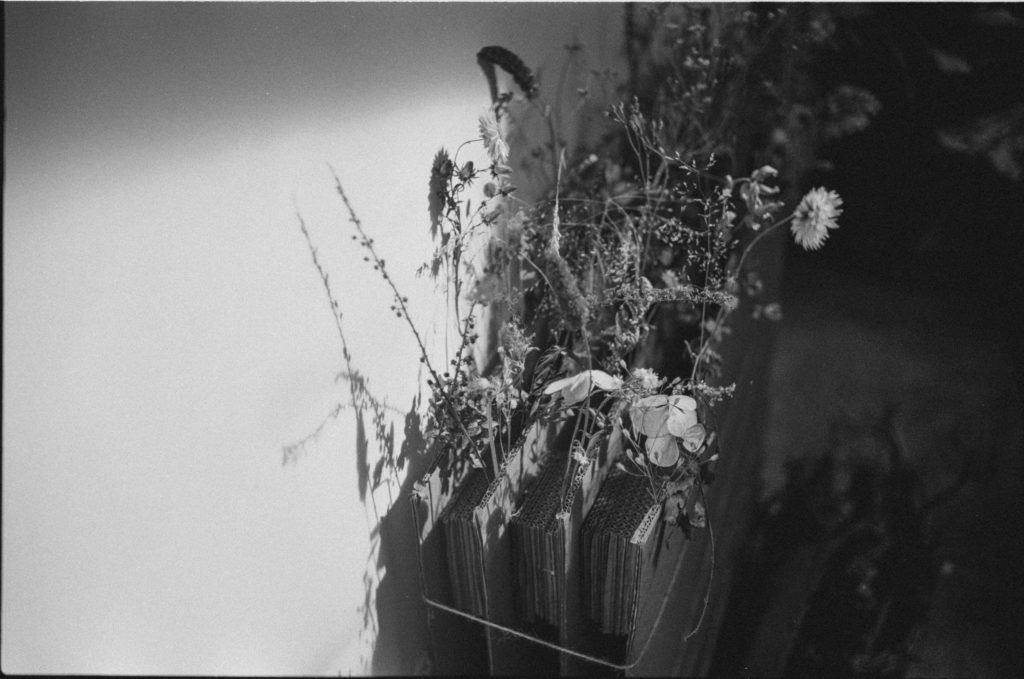
EPILOGUE
I hope this article has shed some light on the workings of film photography, and hopefully also helped you discover whether it might be the right medium for you and your wedding. I know many people – myself included – who had some preconceived notions about film photography being outdated until they gave it a second look – and there’s definitely a reason that everyone who does, falls madly in love with it despite the added challenges. Working with film is about a sense of “art”, about slowing down with purpose, and believing in the power of heirlooms.
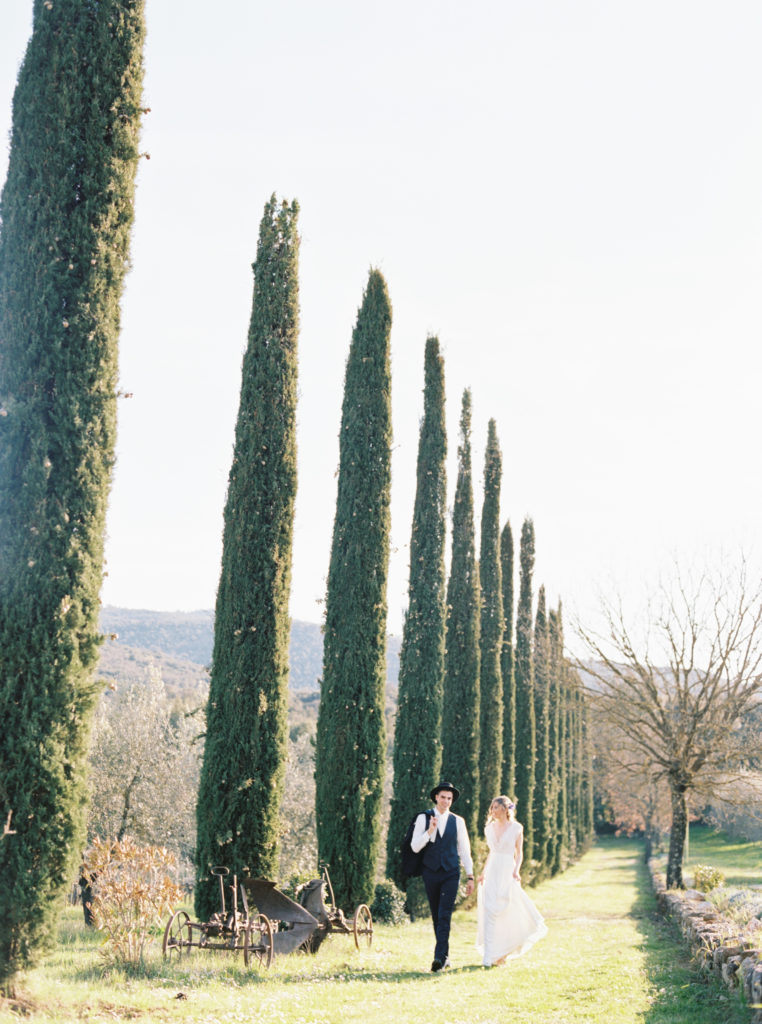
Short Bios of our Film Photography Experts
GINA DOVER-JAQUES
Can you tell me a little bit about your journey towards becoming a film photographer? “Being a romantic and an artistic photographer, I am naturally drawn to images that have a painterly feel, filled with luminosity; so when film found me, it changed everything! It’s a day that will stay with me forever. A fellow photographer persuaded me to have a go with their film camera, and I instantly fell for the feel of a classic camera in my hands, the sound of the film as it moved from one frame to the next and the sense of feeling more ‘in-the-moment’. I was creating images that excited me. It was thrilling and I wanted to discover more. I discovered that film is undergoing a Renaissance that is driven mostly by Fine Art Portrait & Wedding Photographers and I was excited by what they were creating. Their work was timeless & soulful. Since then I have been learning and developing my style in film, and I adore offering this to my couples. I always aim to capture their wedding in a thoughtful & considered way to create a stunning and authentic suite of images that reflect a couple’s story. My clients are at the heart of what I do, and my brand is all about imagery that is romantic, artistic, chic and luminous. I absolutely love what I do and I love to be part of such a beautiful occasion filled with love and laughter. Every couple and their special day is a delight.”
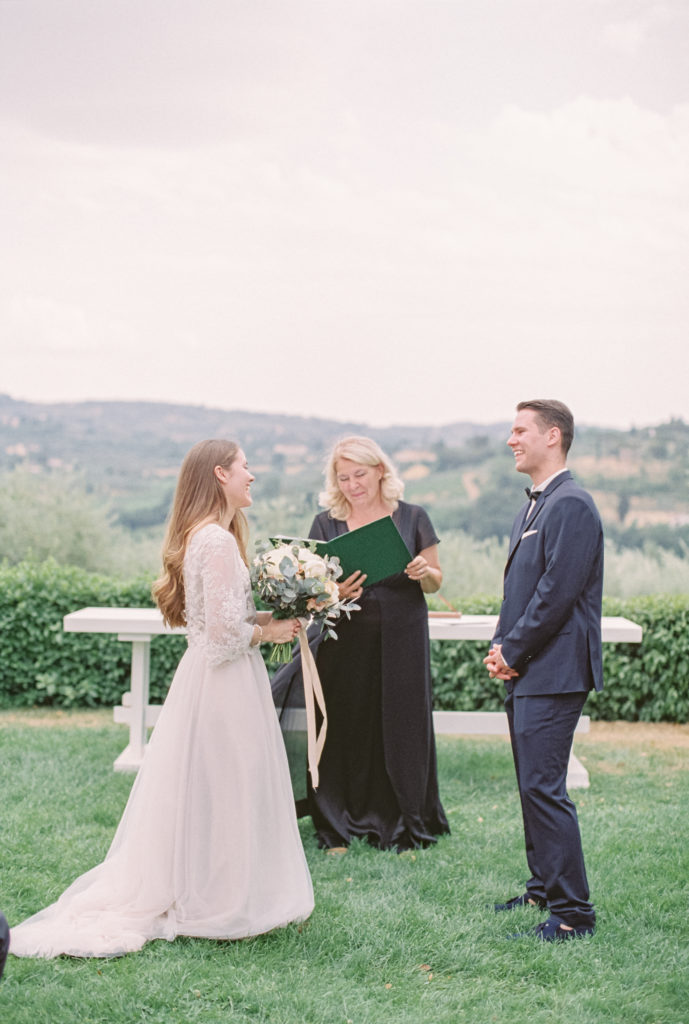
Gina is a published photographer that specialises in luxury fine art weddings and elopements – and her work has taken her all over the UK and beyond. The film stocks she loves to capture on are Portra 800 and Portra 400, as well as Fuji 400H Pro and Ilford 3200. She uses two film laboratories to develop her exposed film, depending on the finish she is after. Visit her gorgeous new website here, and her Instagram profile here.
FLO WESTBROOK
Can you tell me a little bit about your journey towards becoming a film photographer? “I offer a filmic and atmospheric style of photography. I started photography when I was 6 years old by using my father’s Polaroid camera. After realising that I was loving taking photographs, he got me my first Canon film camera. Film photography was all I had known so I was really lost when digital came out! I found my photos really flat, without depth and really struggled with that for a few years. I got so discouraged, as I missed the feel and look of film. It took me many years to get back into it and find myself in creating my own look. Lots of trials, errors and learning! It’s been an incredible adventure. I really do love the thrill of shooting film – you can’t check the result straight away, and that waiting process of getting the photographs back is really special. You always have to be really intentional with it because each frame is really precious and cost a certain price to develop. The results are beautiful. The colours, the natural grain and the depth of colours are something else… something that to this very day I have not been able to recreate on digital. I don’t think I ever will. Film is unique.”
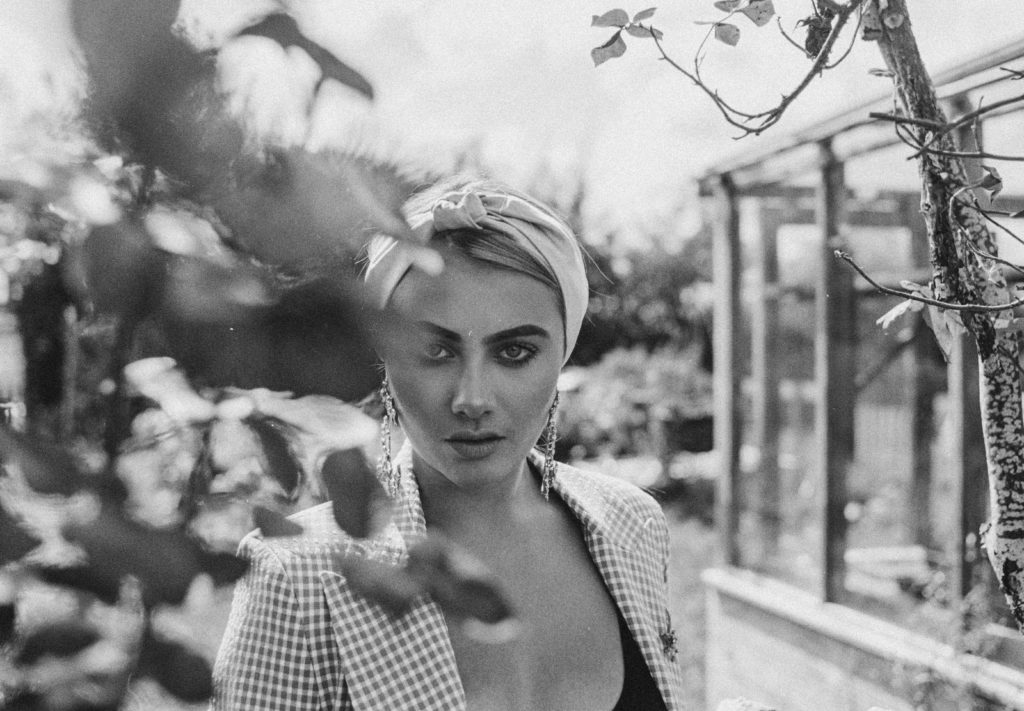
Flo offers a hybrid package which includes film during the ceremony and during the couple’s session, and digital later in the day to capture the evening celebrations. She shoots with Nikon F2 with vintage lenses only, Kodak 800 film, and her favourite lab is the SilverPan Film Lab. Visit her beautiful website here and her Instagram profile here.
TERRY LI
Can you tell me a little bit about your journey towards becoming a film photographer? “I am a London based fine art wedding photographer. I shoot with both medium format film and digital. I used to work with digital cameras only for many years, but I have reached the point of wanting to create better work. So I started to look into film photography, and then I fell in love with it! Film produces such an incredible look on the skin tone, and it has an ethereal and elegant finish. It’s timeless and has a romantic feel to it, and that’s what my brand is all about. I also really enjoy the process of not being able to see the images until the lab returns the scans – it’s like unwrapping Christmas presents each time!”
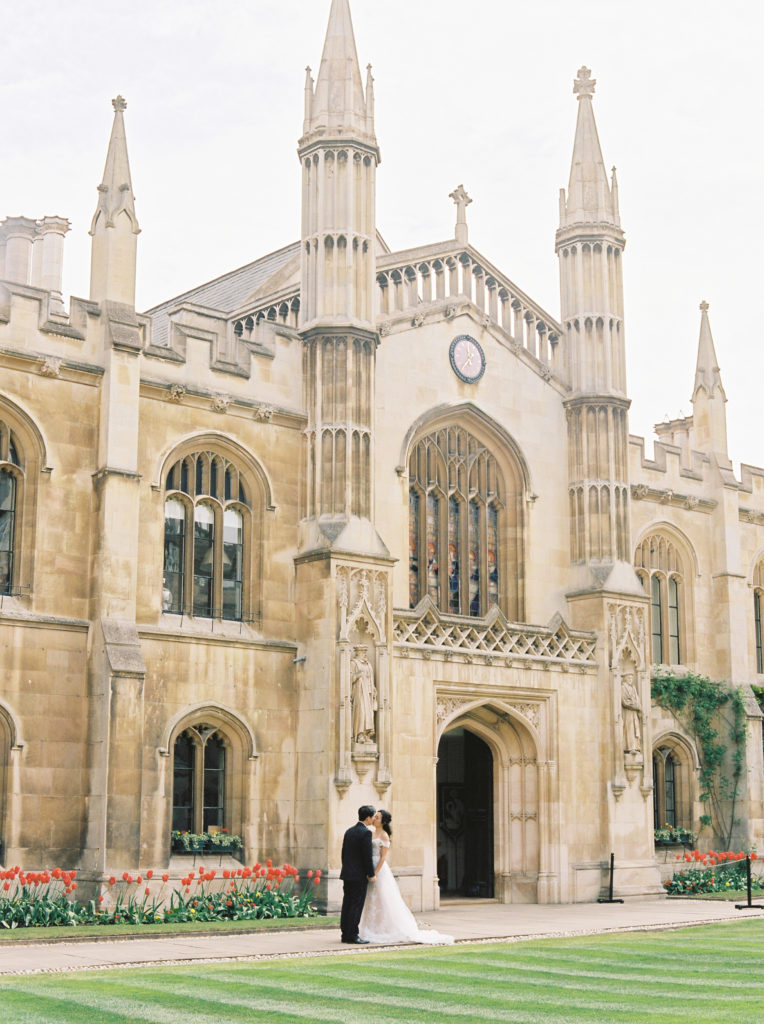
Terry has been developing her gorgeous fine art style over five years working as a professional photographer, and prides herself in building meaningful relationships with each one of her clients. She shoots with a Contax 645, her favourite film stock is Kodak Portra 400, and she uses the Canadian Film Lab to get her film processed just how she likes it. Visit her stunning new website here and her Instagram profile here.
DANI COWAN
Can you tell me a little bit about your journey towards becoming a film photographer? “Since becoming a photographer I’ve loved finding my niche as a fine art wedding photographer specializing in Colorado mountaintop weddings and destination weddings around the globe. I’m drawn to the quiet, intimate moments between lovers; the way he holds the small of her back when they walk together, how she reached up to touch his face before each kiss. I strive to tell each couple’s individual love story in a way that is so uniquely them, and I do so by artistically creating romantic settings and authentic moments through an even mix of soft direction and photojournalism. My style has been described as timeless, romantic, natural, and elegant, and my couples tend to share in my love for natural light, breathtaking landscapes, precious details, and of course, adventure. While I live, play, and work in the mountains of Colorado, my zeal for travel has taken me all over the world to photograph love.”
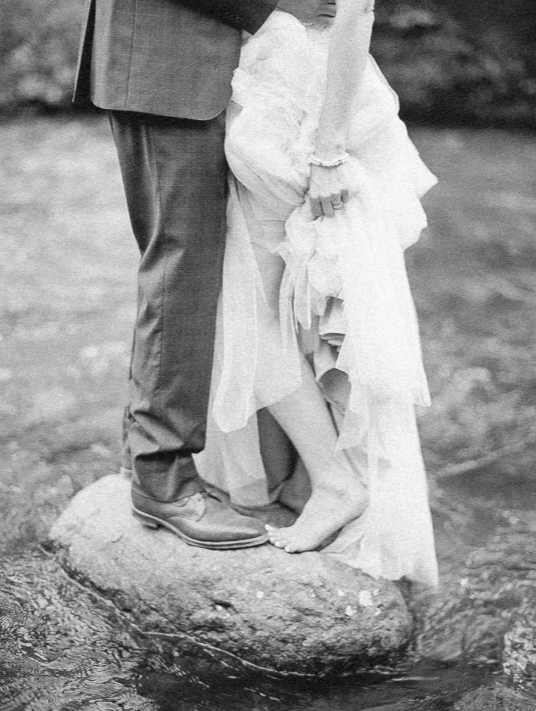
Dani offers bespoke packages for elopements and weddings all over the world, and connects with clients who appreciate the soft, elegant and romantic look that film brings, while placing a high value in the art of photography. She shoots with a Contax645, and her favourite Ziess lens. Visit her gorgeous website here and her Instagram profile here.
If you have any questions or you’d like to find out more about working together for your wedding or elopement, or if you’d like me to connect you with some fabulous film photographers for your celebrations, don’t hesitate to get in touch.
Yours,
Valentina
